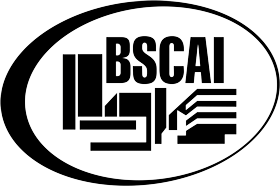
A lot of my work with clients revolves around communicating with customers and prospects. I teach salespeople how to communicate to existing customers about all of the things they can buy from you, because current customers are only consciously aware of about 20 percent of what they can buy from you.
And how to communicate with prospects, not just customers. Because too often, our days are made up of answering calls from current customers who need something, or have a problem. These calls come one after another, and when they do, we don’t get a chance to call on prospects.
I also implement systems of marketing communications: building your list, sending a good newsletter every two weeks, and a “did you know” email during the in-between weeks.
Recently, however, I’ve also found myself working another kind of communication, and found it to be equally important: internal communications.
It turns out, some of my clients have entire departments that don’t interact with each other on important issues like what services your customers might need.
For example, at many companies, the internal customer service people don’t really talk with the external salespeople very much. They might discuss urgent, pressing things like an angry customer, but they rarely have the time (or, frankly, the interest) to alert their sales counterpart about a product they just uncovered a customer is buying. “You know, we sell that here, and everybody knows one P.O. is better than two!”
Let’s say a customer service person is talking with a customer who mentions their frustration with another service provider. This should immediately be communicated to this customer’s salesperson so he or she can call this customer on the phone. “Why don’t you let me help you with that?”
Many companies have orders or quotes that occur on their website, but often the salespeople are not copied on these electronic communications. Why not? This is a glorious lead generation resource. Imagine if salespeople were asked to call — again, on the phone — customers who request a quote or enter an order online? “I saw your order come through, and I wanted to learn a little bit more about what you’re sourcing and how we might be able to help. We handle many products that complement the one you ordered.”
Also, here’s a fascinating one. I teach nearly every client to offer additional services to your customers, as discussed above. But many times this staff doesn’t know what they can offer. The customer doesn’t know what else they can buy from you, but neither does the staff. And if the customer-facing people don’t know what they can sell, how can customers buy it?
Finally, while I speak to the customers of my clients on nearly every project to collect testimonials and present them to the customer-facing staff in the workshops I conduct with them, these testimonials are frequently not seen again. If you have good testimonials from customers you should actively placing them in front of your team. Let people see how good they are. Put them on the walls. Put them into people’s email inboxes. Trickle them out. Remind people what they do. They are not selling products and services, they are improving lives and companies.
Four Steps To Improving Internal Communications

 The Down and Dirty on Cleaning in Virus Season
The Down and Dirty on Cleaning in Virus Season How Surfactant Use is Expanding in Commercial Cleaning
How Surfactant Use is Expanding in Commercial Cleaning Maximize Your Margins: Learn How to Automate Pricing and Track Rebates
Maximize Your Margins: Learn How to Automate Pricing and Track Rebates